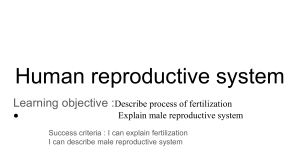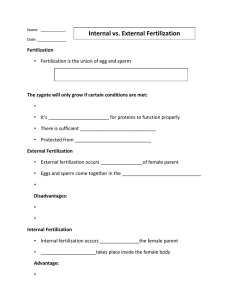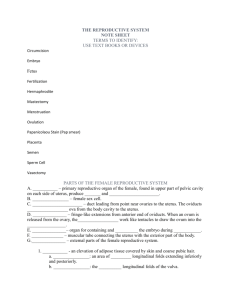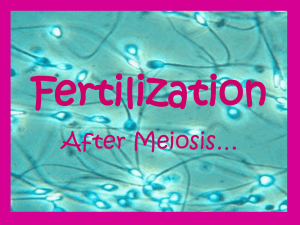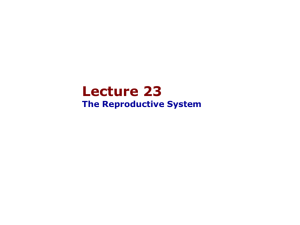ACTIVITIES UNIT 7: REPRODUCTION.- What is another name for a
advertisement
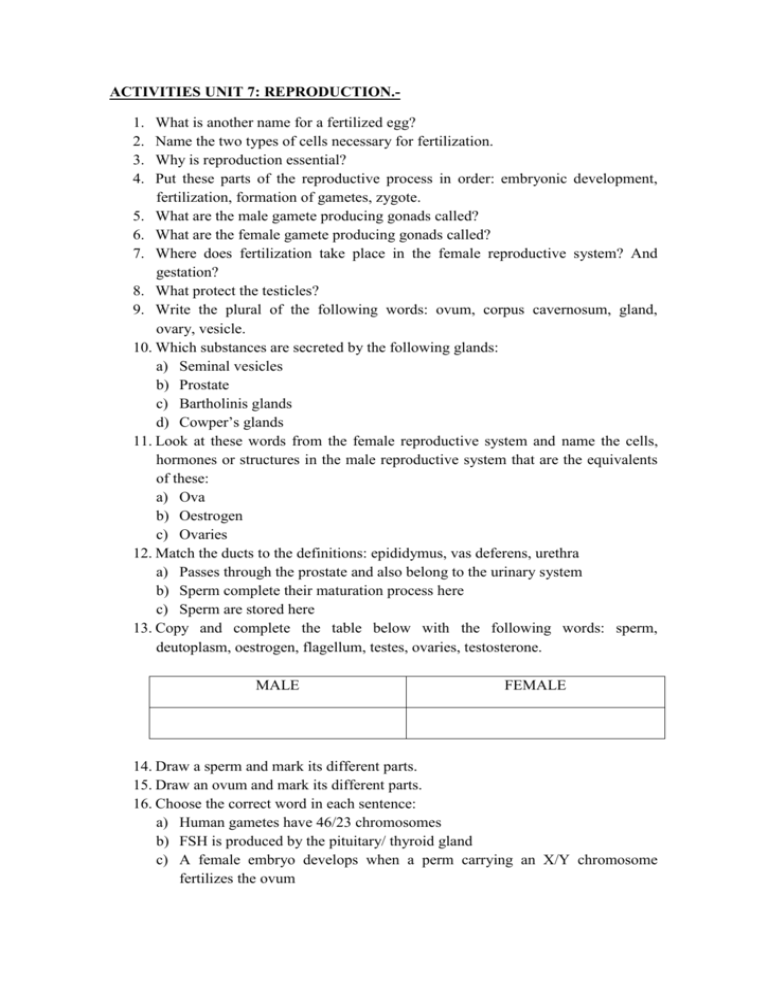
ACTIVITIES UNIT 7: REPRODUCTION.1. 2. 3. 4. What is another name for a fertilized egg? Name the two types of cells necessary for fertilization. Why is reproduction essential? Put these parts of the reproductive process in order: embryonic development, fertilization, formation of gametes, zygote. 5. What are the male gamete producing gonads called? 6. What are the female gamete producing gonads called? 7. Where does fertilization take place in the female reproductive system? And gestation? 8. What protect the testicles? 9. Write the plural of the following words: ovum, corpus cavernosum, gland, ovary, vesicle. 10. Which substances are secreted by the following glands: a) Seminal vesicles b) Prostate c) Bartholinis glands d) Cowper’s glands 11. Look at these words from the female reproductive system and name the cells, hormones or structures in the male reproductive system that are the equivalents of these: a) Ova b) Oestrogen c) Ovaries 12. Match the ducts to the definitions: epididymus, vas deferens, urethra a) Passes through the prostate and also belong to the urinary system b) Sperm complete their maturation process here c) Sperm are stored here 13. Copy and complete the table below with the following words: sperm, deutoplasm, oestrogen, flagellum, testes, ovaries, testosterone. MALE FEMALE 14. Draw a sperm and mark its different parts. 15. Draw an ovum and mark its different parts. 16. Choose the correct word in each sentence: a) Human gametes have 46/23 chromosomes b) FSH is produced by the pituitary/ thyroid gland c) A female embryo develops when a perm carrying an X/Y chromosome fertilizes the ovum 17. Copy and complete the summary below using the following words: embryo, fertilization, food, immobile, ovum, propel, round. The (a) is a large (b) cell visible to the naked eye. It is (c) because it does not have any structure to (d) it. It has a reserve (e) supply. This can feed the (f) for the first few days after (g) . 18. Where do the following processes take place in men? a) Production of sex hormones b) Gamete maturation c) Production of sperm d) Secretion of seminal fluid 19. Where do the following processes take place in women? a) Fertilization b) Gestation c) Production of sex hormones d) Implantation 20. Classify the following changes that take place during adolescence in B: boys, G: girls, BG: boys and girls. a) Body fats increases b) Breast get bigger c) First periods d) Genitals get bigger e) Hips widen f) Larynx and vocal cords grow g) Muscle mass increases h) Pelvis narrows i) Sebaceous glands secret more sebum j) Shoulders widen 21. Where does fertilization usually take place? 22. How long does sperm live for? 23. How long does an egg live for after ovulation? 24. Complete the following sentences: a) Gestation is the period of time between fertilization and b) Gestation lasts for
